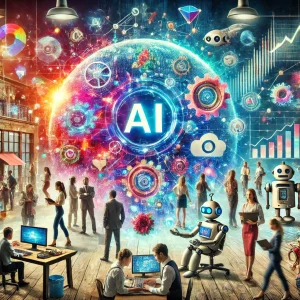
Effective leadership is built on a foundation of clear, intentional, and constructive communication. Among the many tools leaders use to guide their teams, feedback and criticism stand out as particularly powerful. However, while they are sometimes used interchangeably, they serve distinct purposes and can lead to vastly different outcomes. Mastering their use, and understanding the role of other communication styles can elevate team performance, morale, and trust.
Feedback vs. Criticism: A Deeper Dive
Feedback and criticism differ not just in content but in tone, delivery, and intent. Misusing one for the other can mean the difference between empowering someone to grow or discouraging them entirely.
- Feedback: A Constructive Guide to Growth
Feedback is constructive, forward-looking, and aims to improve specific behaviours or outcomes. It is a neutral or positive interaction, often highlighting both strengths and areas of improvement. Effective feedback is actionable, showing the recipient a clear path to better results.
How Feedback Drives Long-Term Growth: Feedback creates a loop of improvement where employees feel valued and motivated to develop continuously. By reinforcing strengths and addressing weaknesses with actionable suggestions, feedback builds confidence and clarity.Tips for Giving Effective Feedback:
- Be Specific: Avoid general comments like “Good job.” Instead, highlight precisely what worked or what could be improved.
- Balance Positive and Developmental Feedback: Start with what went well before addressing areas for growth.
- Focus on the Behaviour, Not the Person: Keep feedback objective and tied to actions rather than personality traits.
- Follow Up: Check in later to ensure the feedback was helpful and to provide ongoing support.
Example: “Your presentation was clear and engaging. To make it even better, consider adding more data points to support your argument.”
- Criticism: A Pitfall to Avoid or Reframe
Criticism tends to focus on what went wrong, often without offering solutions. It can feel judgmental or personal, leading to defensiveness, disengagement, or even a fear of failure. While criticism may stem from valid observations, its negative framing makes it less effective for fostering improvement.The Unintended Consequences of Criticism: Criticism, even when accurate, can demotivate employees if it highlights failures without providing guidance. Over time, it may create a culture of fear or hesitation.
How to Reframe Criticism into Actionable Feedback:
- Pair Issues with Solutions: Never point out a problem without suggesting ways to fix it.
- Address Privately: Criticism in public can embarrass the recipient and harm trust.
- Explain the Context: Make it clear why an outcome was problematic without assigning blame.
Example: Instead of saying, “Your presentation lacked data and wasn’t effective,” reframe it: “The presentation was a good start, but adding more data could strengthen your argument and resonate better with the audience.”
Mastering Feedback and Criticism in Leadership
Navigating feedback and criticism requires intentionality. Feedback is about guiding growth, while criticism often stems from frustration or reactionary tendencies. To excel as a leader:
- Approach all communication with empathy.
- Use feedback as an opportunity to coach rather than critique.
- Treat mistakes as learning moments, not failures.
- When necessary, reframe criticism into constructive guidance to maintain morale and encourage progress.
The Role of Other Communication Types in Leadership
While feedback and criticism are essential, they are just two tools in a leader’s communication toolkit. Effective leaders incorporate a variety of communication styles to inspire, align, and build trust within their teams:
- Suggestions: Encouraging Collaboration
Suggestions invite team members into the problem-solving process, fostering a sense of shared ownership and innovation.
Example: “What if we tried using a storytelling approach in the next campaign to connect more emotionally with our audience?” - Recognition: Celebrating Success
Recognizing achievements validates effort, reinforces positive behaviour, and boosts morale. Celebrating both major milestones and small wins creates a culture of appreciation.
Example: “Your attention to detail in the report was outstanding and played a huge role in the client’s positive feedback.” - Advice: Sharing Expertise
Providing advice allows leaders to guide team members through challenges by sharing their own experiences and perspectives.
Example: “When I faced a similar situation, I found that prioritizing tasks based on impact helped me manage my time more effectively.” - Evaluation: Setting the Benchmark
Evaluations offer structured opportunities to assess performance, celebrate wins, and set clear goals for improvement.
Example: “Your quarterly performance showed impressive progress in client retention, but we need to focus more on acquisition strategies in the coming months.” - Coaching: Unlocking Potential
Coaching goes beyond advice by empowering individuals to find their own solutions through guidance and thought-provoking questions. It fosters independence and skill development.
Example: “What strategies have you already considered for resolving this challenge? How do you think those might work in practice?”
Why Communication Diversity Matters in Leadership
By using a range of communication styles, leaders can:
- Build Trust: Transparent and empathetic communication fosters psychological safety.
- Encourage Growth: Feedback, advice, and coaching help team members develop personally and professionally.
- Align Goals: Recognition and evaluation ensure teams remain focused on shared objectives.
- Foster Collaboration: Suggestions and open dialogue create a culture of shared ownership and innovation.
Communicating Like a Leader
Great leaders understand that communication isn’t one-size-fits-all approach. By mastering the art of giving feedback, reframing criticism, and leveraging other communication styles, leaders can create an environment where their teams feel supported, valued, and empowered.
Start with empathy, lead with intention, and use communication as a tool to guide your team to success.









